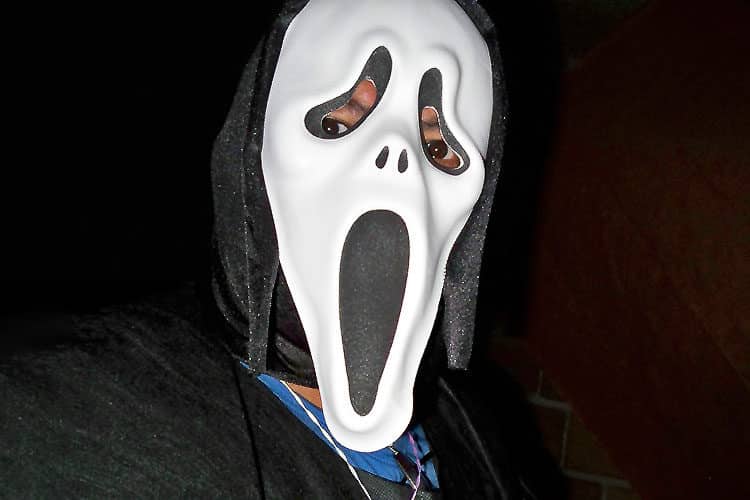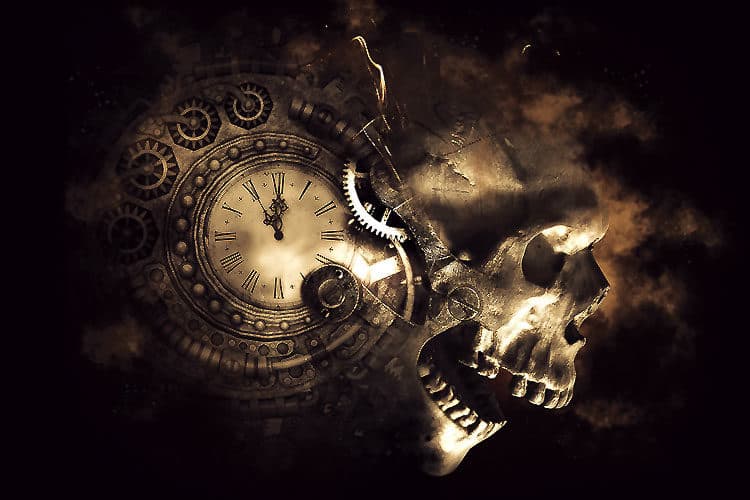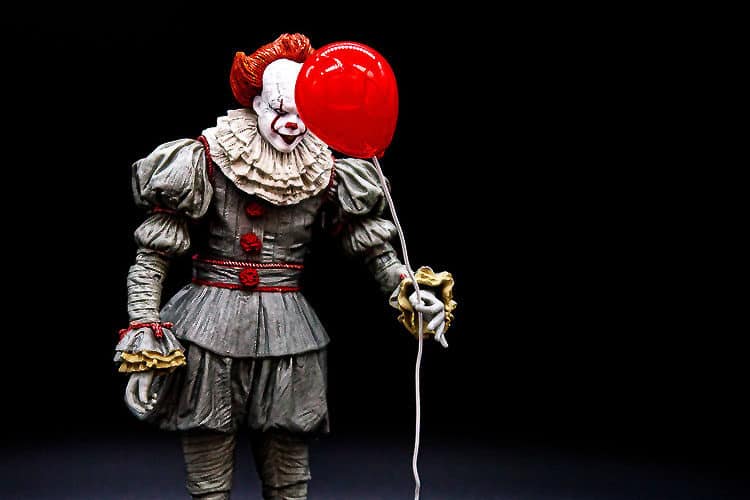A rational look at the prospects for haunted attractions this year and for your haunt in particular
Episode 46 of my A Scott in the Dark podcast (recorded on July 25th, 2020) asked the sobering question, “Is Halloween dead?” The day before, Universal Studios cancelled Halloween Horror Nights in California and Florida for 2020. That was the most recent of several haunted attractions that decided not to open for the 2020 Halloween season.
I have plenty of opinions on this topic.
It was a huge decision that took a great deal of discussion for Universal Studios Orlando to cancel their 30th year of Halloween Horror Nights. This is a big deal, because Halloween events are moneymakers. The question is now being asked, “If the parks, with their huge budgets, don’t think they can make money from Halloween during a pandemic, shouldn’t we all just close?”
Listen to this episode
Review Your Business Model to Determine If It’s Profitable to Open
First, we need to take into consideration that every haunt has a different business model. There are similarities, but each haunt has a different way of generating profit. Large, theme-park events are numbers-driven. They’re driven by attendance. The more people attend the park during the Halloween events, the more money they make. It’s all about packing people in. But packing people in is being cautioned against during COVID-19. All haunters want to have the most attendance they can, but high attendance is imperative in large, theme-park haunts to generate enough revenue to cover their expenses.
Theme-park haunted attractions also start building early in the year and can’t cost-effectively pivot as COVID restrictions continue to change. However, a theme park has a different business model than a stand-alone haunt. Private haunts are nimble. They may not have the powerhouse budget, but, because they don’t have the powerhouse budget, they also don’t need the long lead time that some larger haunts and theme-park haunts do.

Don’t Panic, Pivot
As you’ve heard me say over and over, “Don’t panic, pivot.” Find fresh ways to redesign and rethink your haunt. Don’t just say you’ll insist that everybody wear masks and wash their hands. Find a way to make this work within your haunted attraction and enforce it.
The issue this year is not whether you will be stellar. It’s about whether you’ll survive.
If you shift into survival mode, you’re offering guests something they wouldn’t be able to get anywhere else. For example, there are thousands of people who would have gone to Halloween Horror Nights this year that will look for a place to enjoy a haunted attraction. So, if a boutique-style or smaller haunt can open, it may have a good year even if it must pare down the scares.
Not that a performer scaring from six feet away can’t be effective. We can reinforce actors with loud audio triggers, with lighting triggers, or effects that make the actor appear closer. Again, we need to design with that in mind while incorporating the minimum safety requirements—physical separation of guests, physical separation of guests and actors, appropriate facial coverings, and hand sanitizer and hand washing stations everywhere.
Great creatively or financial gain will not mark this year for haunts. But – it’s better to have a year where you keep your actors paid, you keep your brand out there, and you satisfy guests that come to your haunt so they continue to return year after year.
Even if haunts need to operate with reduced capacity, we can get through this year and figure out how to move forward.
Here’s an example of thinking positively about reduced capacity. If you can guarantee that a family group won’t see another guest in your haunt, that experience is worth more money. Universal Studios has been open during the day for quite some time, and people say that the current experience—dictated by the pandemic—is what they want from now on. Guests have a timed schedule for their entire day, and many think of this as a concierge approach. If you adopt this concierge approach for your haunt, you can charge a premium. In this way, you’re taking a negative and making it a positive by thinking innovatively.

Adopt Timed Ticketing
There are so many advantages to timed ticketed, especially this year. First, it puts money in the pockets of the owners and operators before the guests even show up. Second, it allows you to gauge what your staffing needs will be so you can adjust in advance. You improve the guest experience—because nobody’s being crammed through in a conga line—while simultaneously distributing more guests over more nights. So, instead of having these killer Saturdays and Wednesdays that are like ghost towns, timed ticketing allows you to spread the same number of guests across more nights.
For years, guests have fought timed ticketing. They want the freedom to show up when they want to show up. Well, this is no longer an option in most places—at theme parks, zoos, aquariums, museums, restaurants. Reservations are necessary almost everywhere. Our guests are now used to this, so, if you’re planning to open, be certain to use timed ticketing.
Educate Your Guests Before They Arrive at Your Haunt
After you innovate – educate. Make certain your marketing and social media lead with your safety efforts. Lead with the safety aspect, promote with it, be straightforward, and make sure you carry through on your promises regarding safety. And, be specific. If your promotional material says guests must wear masks, you must state that their face covering must cover their mouth and nose, and they must always wear it.
Guests will be ready for these changes if we do them right because they’ve already asked for the more boutique experience, and now we can deliver it.
Make Use of Your Parking Lot or Other Outdoor Space
If your parking lot is an enormous field, consider how that might work as your show space, and do a drive-in event. Attendance at drive-in movies is skyrocketing in the pandemic. Sit people in their parked their cars and do a big, scary, wonderful show in front of them. Have monsters and creatures roam through the parking lot and pop up next to the car windows to scare guests. This could be phenomenal, and it’s a great way to use your space in a different way.
The rules and regulations you must follow will be unique to your location. Finding out what the rules and regs are in your area may take some research, because they often differ by city and by county and by state.

Make Contingency Plans
Have not only an opening plan, but backup plans. For example, you may have an A-level plan, which is a socially safe, physically distanced haunted attraction. A B-level plan might include a reduction from 50% capacity to 25%, with everybody going through as a single guest or a single family. The next level might be to set up cameras and do a virtual version of your haunt, because you’ve already got your actors, your scenic, your costumes, and you’re ready to go. Film a walk-through of your haunt experience one night, put it up online, and do a GoFundMe page. Be sure to have contingency plans that incorporate multiple levels.
Ask Yourself the Hard Questions
Let me be clear: I’m not saying all small haunts should open. Look at your books, look at how much money you need to make, look at the sponsorships you can get, and make your own decisions. Ask yourself the hard questions. It could be you can pivot, or it could be the best thing to do is hold off for a year. Home haunters ready to open in 2020 and decide not to open can keep those ideas for another year and add to them, so when they come back in 2021, they’ll blow the neighbors’ socks off.
“I Can’t Open. Now What?”
Let’s assume you’ve done your due diligence and decide you can’t open. There are some very respectable haunts out there that have made this choice. They’ve done their homework and figured out their best way to not lose money is to keep the doors closed and look at other options.
Find different ways to use your space, such as opening it up for small events like family Halloween parties. You may put together a package that lets people know your haunt won’t be open this season, but there will be a special haunted-library party or a dungeon-of-terror party for up to whatever number of people your local jurisdiction will allow you to put into a room. Selling snacks or getting a temporary liquor license to make it a party zone is also an option.
If you’ve already done a lot of work to prepare for this Halloween season, and you decide not to open, take everything you’ve planned, hang on to it, and look at perhaps opening in February for Valentine’s Day or next summer for two weeks. Most horror films premier during the summer or at Christmastime. If people have a reduced haunted attraction experience this year, they’ll be ready to be scared in person come Valentine’s Day or the summer of 2021.

What Can a Haunt Fan Do?
We’re not making our Halloween season travel plans like we did in previous years. But Halloween is still Halloween and, if you like to get scared, there are plenty of ways for you to do that.
Virtual horror film-watching parties is one way. Plan a night of the scariest movies you can think of and watch them with friends and family online. If you know someone with a big backyard, put up an inflatable screen and watch them under the stars—with blankets or chairs six feet apart. Moving-watching parties, whether virtual or in person, are a great way to get scared and celebrate Halloween.
Get Creative and Get Scary
Halloween existed long before haunted attractions did, so be scary. Gather around a campfire, get out a book of Edgar Allan Poe’s stories, and read them out loud. Reading scary literature is an amazing way to create a scary environment. Kids get into it, and so do most grownups. Bring out a bottle of wine, “The Telltale Heart,” a creepy storyteller, and you’ll have a fun and scary party for adults. This is a great way to celebrate Halloween. Don’t fear stepping away from technology. Look at the printed word because stories have been terrorizing people for hundreds of years.
Is Halloween Dead?
The answer is clearly, “No, it isn’t.” Halloween will survive this pandemic the same way it survived 9/11, the same way it survived weather issues, the same way it’s survived for generations—by changing.
How we used to celebrate Halloween and how we will now celebrate Halloween is different, and it will continue to evolve. But, we will always continue to celebrate it. The most important thing to recognize is, if you like to scare or be scared, you can still do that—just in a different format. There’s no need to dramatically wail, “Oh my gosh, no one will be open. The Halloween season is over, and my life will end.” It won’t.